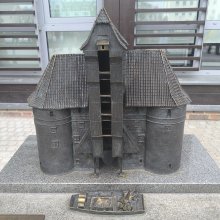
We all have dream destinations. Places where we have never been, but feel some kind of sympathy, connection or even a sort of déjà vu – the feeling that we have already been or lived in that place before. Gdańsk has always been such a city for me, particularly after I moved to Poland. Going there was a trip that I had been planning at least for five years. It never happened fo a long time though.
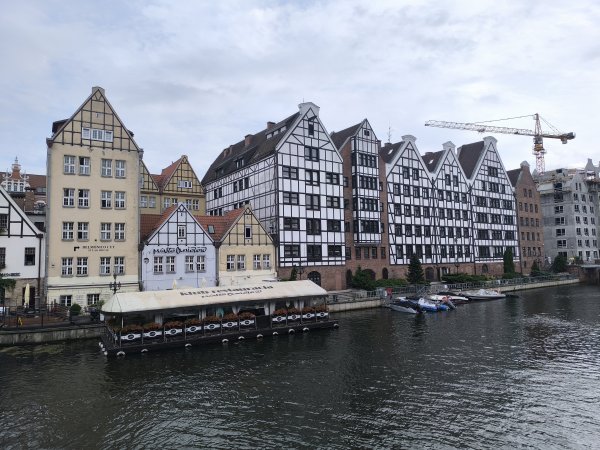

The fact that it lays by the sea and I found a lot of local stories during my mythology research also contributed to my strong will to visit the place. Gdańsk, situated in a bay by the Baltic Sea, has an important role since the very ancient times.
Although we do not know about any huge ancient settlements in the area, it has been inhabited since the Bronze Age and was part of the famous European trade route, the Amber Road that I will mention later.
The area was controlled by the Polish tribe called Pomeranians (named after Pomerania, meaning ‘Seaside Land’) who established a Duchy that was annexed by the Kingdom of Poland later on.
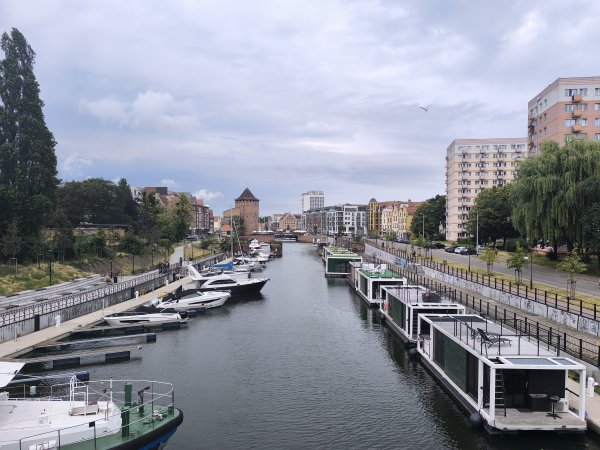
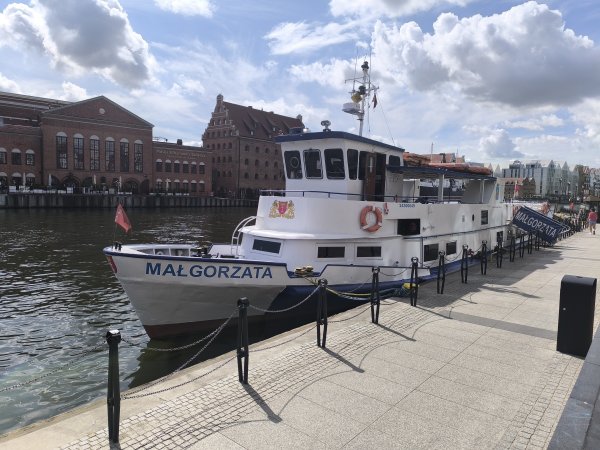
The expansion of the Teutonic Order changed the whole history of the city though. Justified by the fact that the pagan Prussians (Baltic people, not equivalent with the citizens of the Kingdom of Prussia) must be christianized, the German knights gained new land on the East and established their military state by the Baltic Sea, in the North of Poland.
Gdańsk was called Danzig by Germans for many centuries and had a significant German population. After the First World War Germany experienced it as a great loss that the city became a ‘free city’ under the protection of the League of Nations and the Polish sea corridor cut Eastern-Prussia from the rest of Germany.
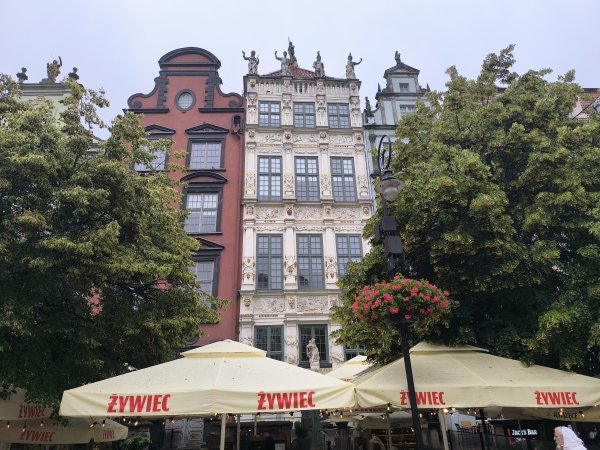
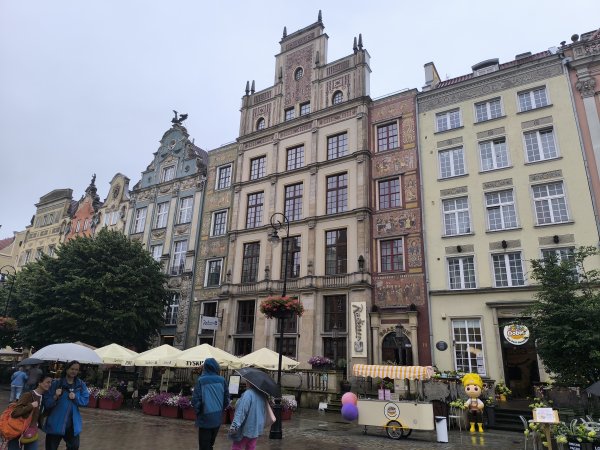
The vivid and rich history of the city can also be seen by the architecture of Gdańsk: although the colors, particularly the brick red and brown shades and the colorful town houses reminded me to a couple of other Polish cities, it was visible that the style of this place was somewhat different.
My very first walk was along river Motława, which is the most important river of the city besides Vistula and its branches (like Martwa Wisła, 'dead Vistula'), which empty to the Baltic Sea at Gdańsk. The bridges, islands, ports and channels reminded me to another Polish city, Wrocław, but also a little bit to the vibes of Venice which both have a similar relationship with the water.

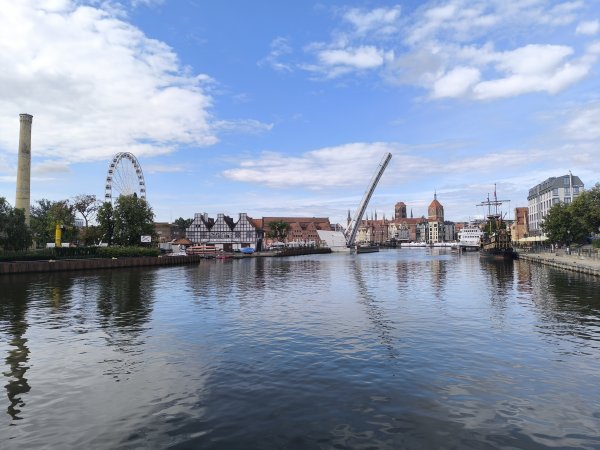
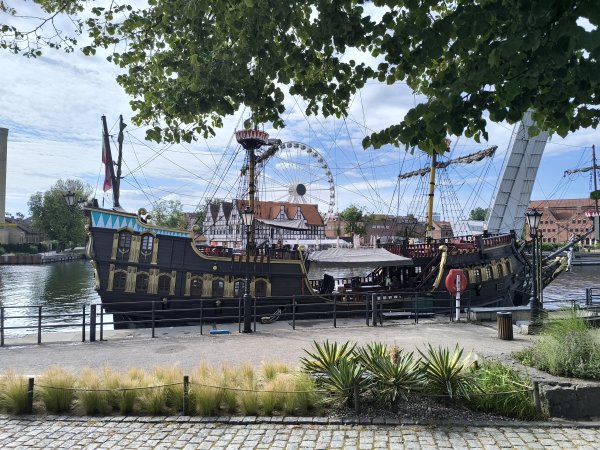
During this walk I have crossed by the island of Ołowianka, where you can also try the Ferris wheel called Amber Sky, that you can reach on a bascule bridge available for passengers in the evening hours.
Then you will also see an important, long island called Wyspa Spichrzów (Granary Island) where indeed you can find a lot of former granaries – some of them unfortunately in ruins. Nowadays the island is a touristic center with many shops, taverns and restaurants, but there is a huge variety of accommodations there from the cheapest hostels to the fanciest hotels.
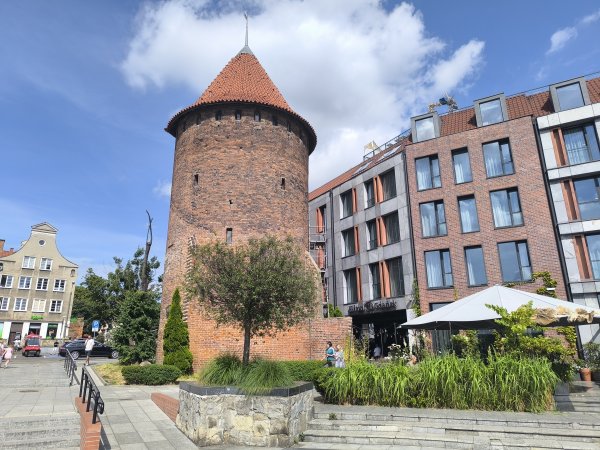
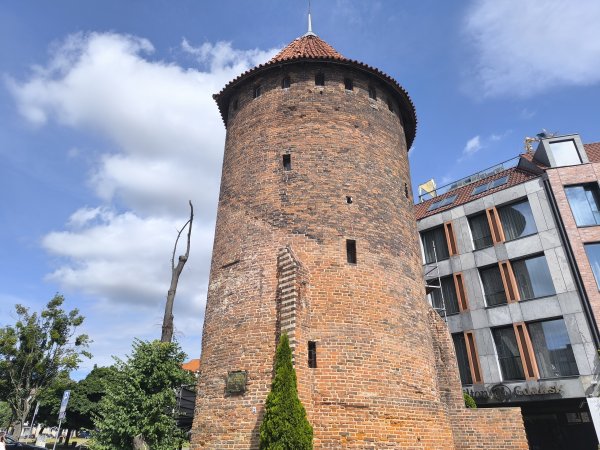

I also noticed it that there are many renovated and brand-new buildings by Motława, but they have the shape of medieval town houses in order to preserve the vibes and the image of the original city. Along the river first you will pass by small square with the Swan Tower (Baszta Łabędź), and then you will find one of the greatest and most emblematic sights of the city, the Port Crane (Żuraw).
There are many decorative gates located by the riverside that lead to important parts of the city: some of them have interesting names like Cow’s Gate (Brama Krowia) St. John’s Gate, but let’s start with another one, Brama Mariacka (Holy Mary’s Gate).
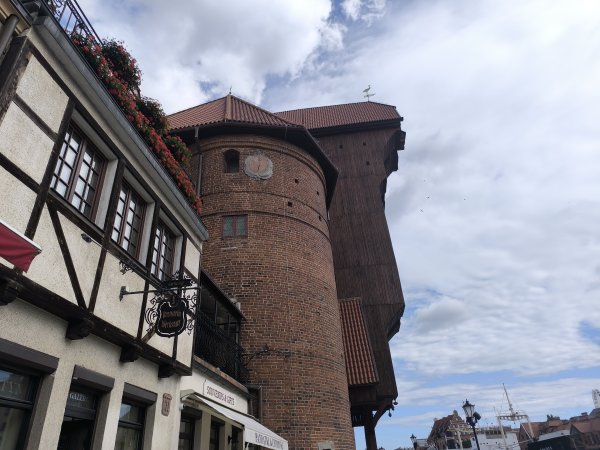
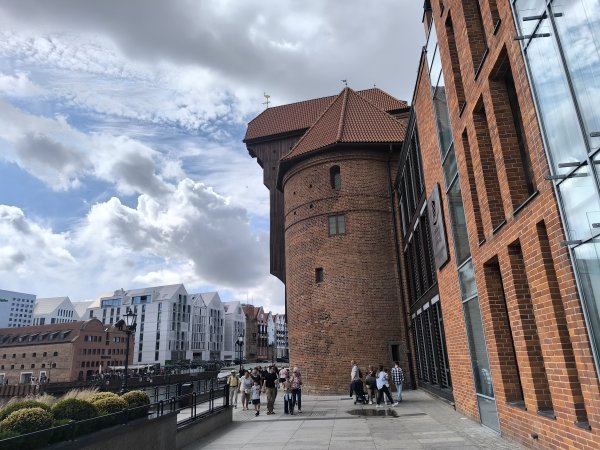
The gate takes us to a narrow street named Mariacka after Mary as well and covered by cobble stone, while there are shops and restaurants on both sides, surrounded with stone heads, sculptures and stone reliefs, which gives a very ancient and timeless atmosphere to this area.
The gate’s and the street’s names are not coincidences, but connected to the fact that the street leads to the Church of St. Mary (Bazylika Mariacka), which is the biggest brick church ever built in the world! After knowing Polish churches so well, it was not a surprise for me with such a local tradition that one of them should hold this record.
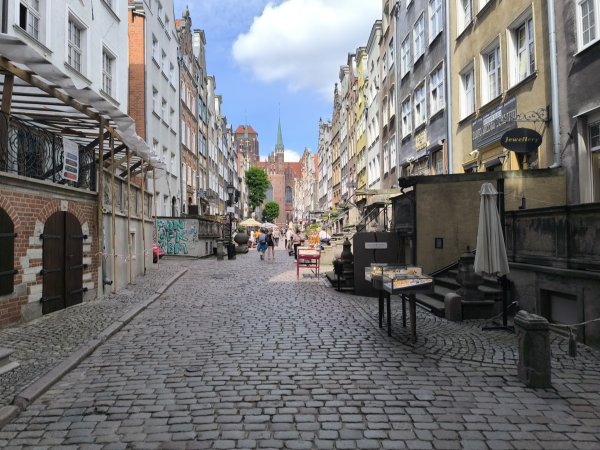
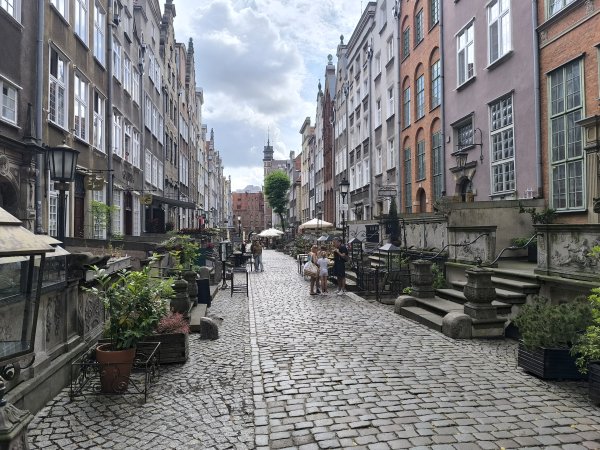
The church has a monumental structure not just outside, but also regarding its interior: the extremely high ceiling, just like in other churches of the city, is covered by small stars like if it was the sky.
Each star represents a donation for the church dedicated for the construction or the maintenance of the building, which system – in theory – works even nowadays. Every corner of the church has some hidden secrets and all paintings, statues, altars have their own stories.
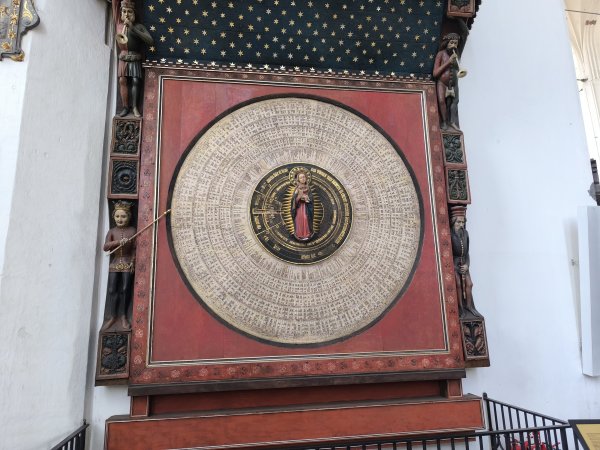
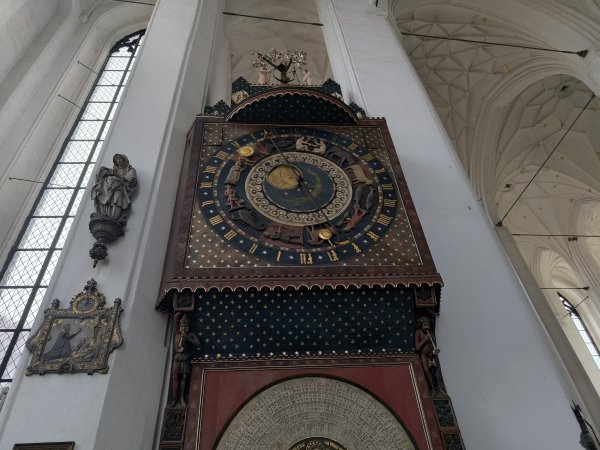
Surely, the most remarkable treasure of the church is the astronomical clock showing the zodiac signs and the different phases of the moon and the sun. A tragic legend says that the young clockmaker installing the clock fell in love with the mayor's daughter, so the furious mayor, who was not in favour of the idea, killed him by pushing him down from the top of the church.
Besides, if you look down, you will see that there are plenty of important people buried in the church. The most famous one among them is the Dutch-born admiral, Arend Dickmann, who won an important naval battle over the Swedish fleet. It is also worth to go up to the bell tower and check the city view, although it is not so easy and one should mind the narrow stairs and low ceiling leading up to the top.
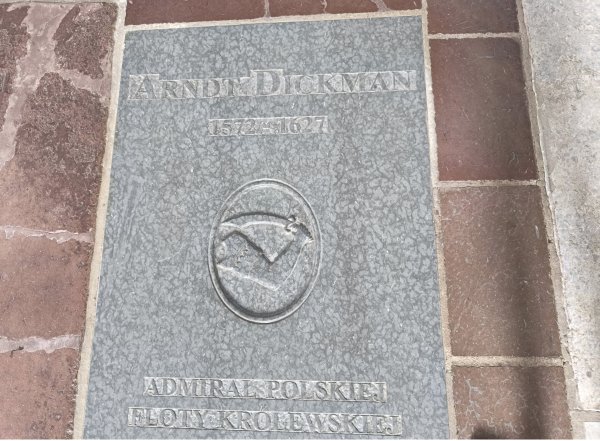

The other famous church of Gdańsk, St. Catherine's Church is also the final resting place of an important character of Polish history: astronomer Jan Heweliusz, although not so famous as his colleague and co-patriot Copernicus, had made a lot of significant discoveries such as finding new constellations and examined the topography (surface) of the moon.
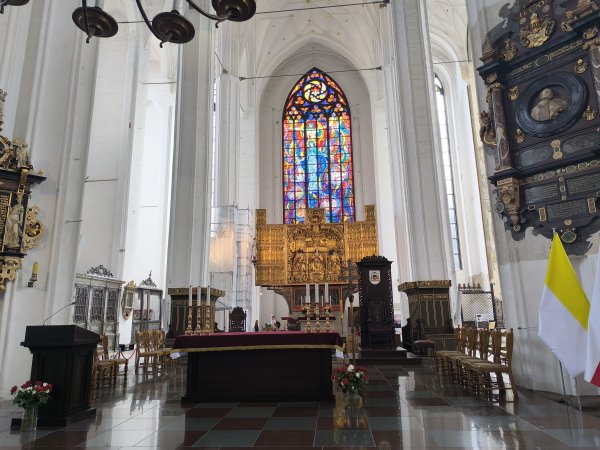
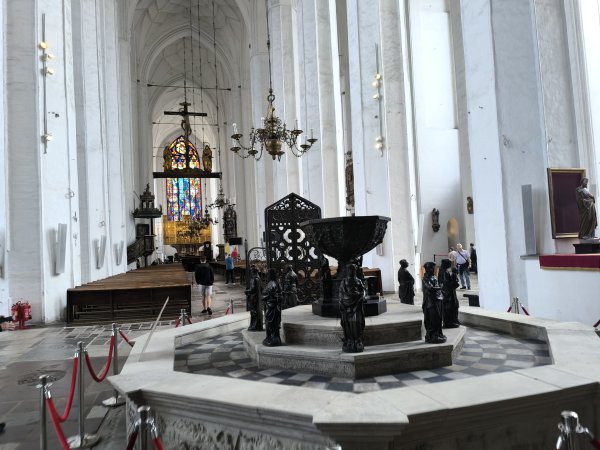
Heweliusz got a sculpture with his favourite tool, a quadrant, and a whole artistic mural with reference on his work. The touristic marketing also uses his character: namely, there is a small lion figure called Hewelion shown in different position all around the city - just as the gnomes in Wrocław or the rabbit in Gniezno.
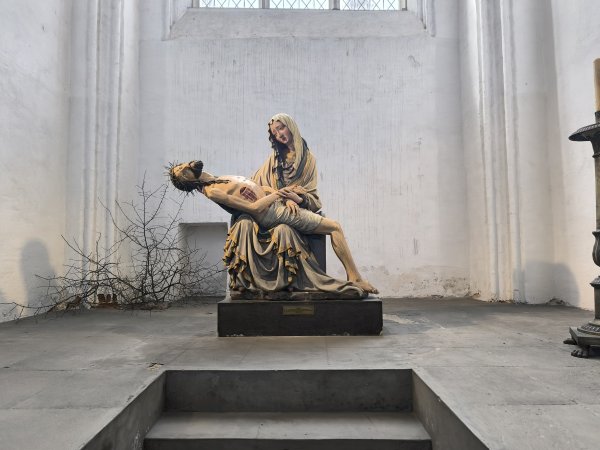
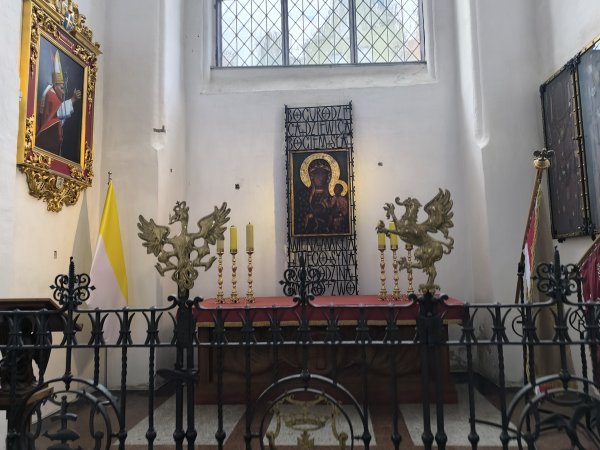
Speaking of lions, the Four Quarters Fountain close to St. Mary’s Church is an incredible modern sight of the city: the lion statues placed in the four corners are represented in different positions and look very realistic with all the curves, folds and wrinkles included.
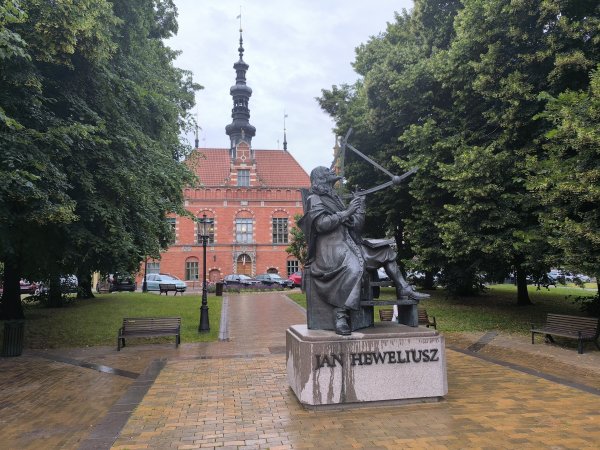
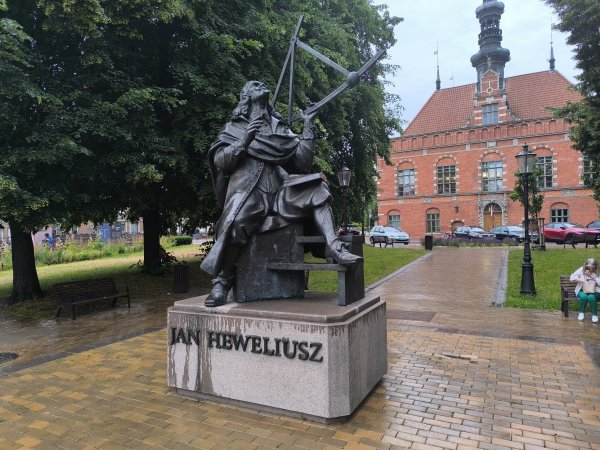
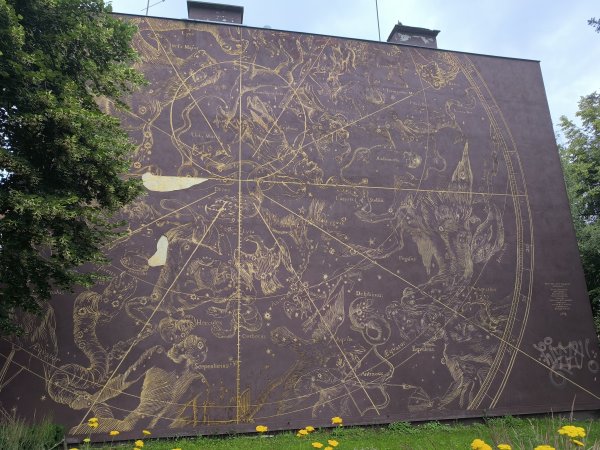
The area of St. Catherine is full of water mills, cottage houses, towers, bridges (of course, usually with padlocks of lovers) bastions, former city walls and indeed provide a medieval atmosphere.
This is also the part of the city where you can find the Amber Museum (Muzeum Bursztynu). Since I have already mentioned the Amber Road, it is important to highlight that amber had always been an important product playing a great role in the region’s trade, and there are many street sellers and shops where you can by either real or fake amber gifts.
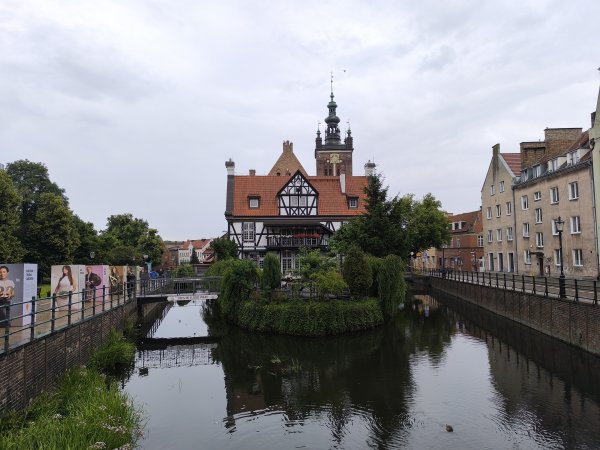

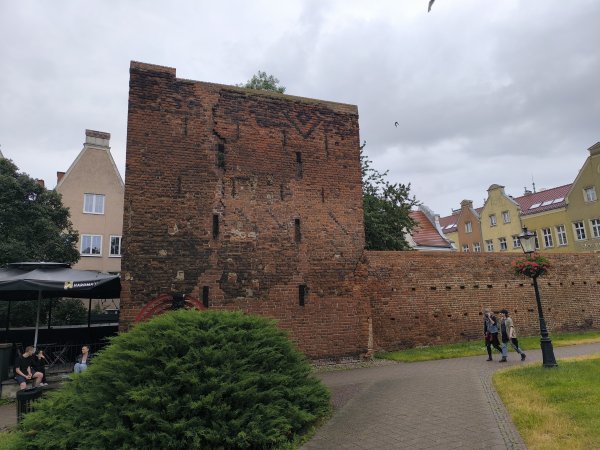
The local mythology confirms this fact as well: it is said that the Baltic King, lord of the Baltic Sea lives in an amber palace at the bottom of the sea and the different mermaids and sea maids (morzeczki) also wear an amber necklace.
Pomerania is also a land of another Slavic people (officially a Polish subgroup) called Kashubians, who also have a legend saying that their mythical king sleeps in an underground amber palace waiting for his return.
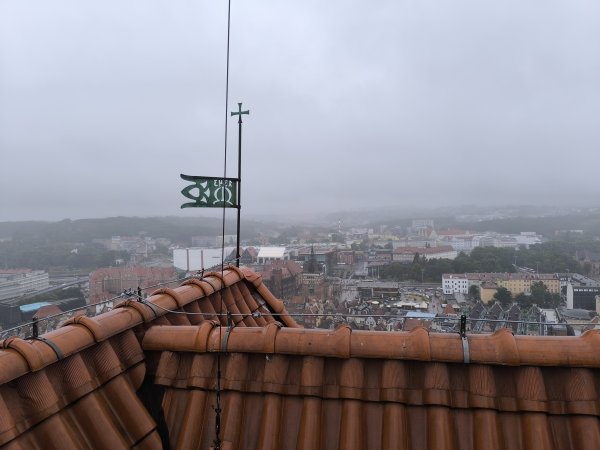
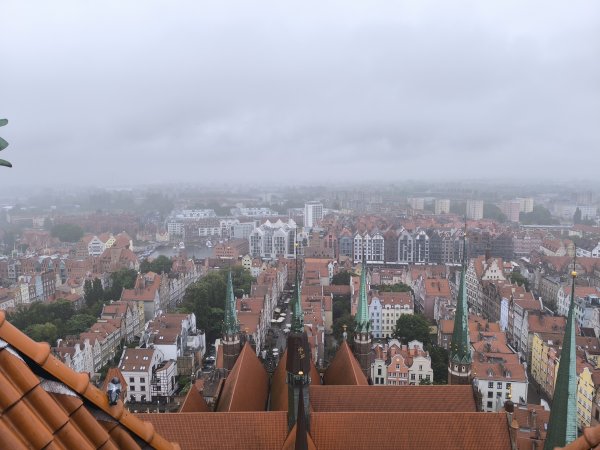

I also remember a story of a vodnica (female water spirit) in Vistula trying to seduce a poor lad: first she asks for a necklace of amber, then of pearl, then of the stars: when the young man says it is not possible to get such a necklace, the vodnica turns into a furious monster and her scream makes an earthquacke.
Last, but not least, local creatures include prehistoric stone giants called Stolems and the Redunice: female fairies who turn into swans and fly over the horizon of the Baltic Sea, to the Land of the Dead, after the death of their mortal husbands. It is also said that there are storks (or swans) coming from the sea and turning into people for the half of the year, then turning into bird again and flying away for the other half.
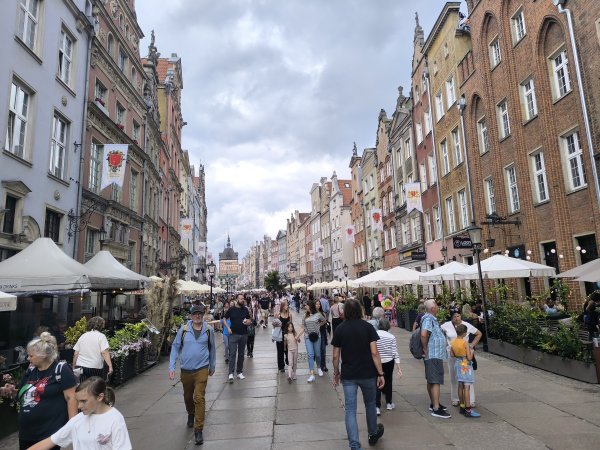
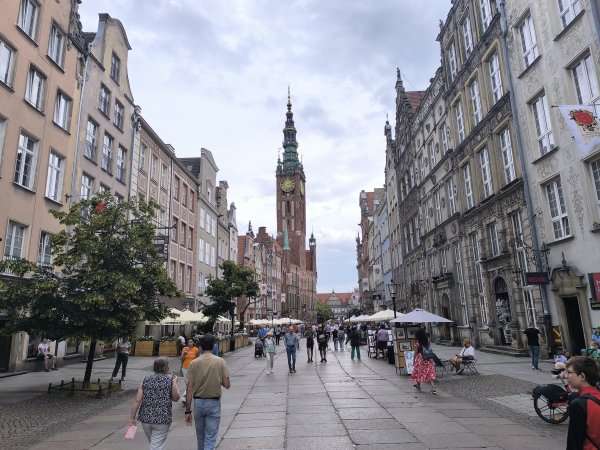
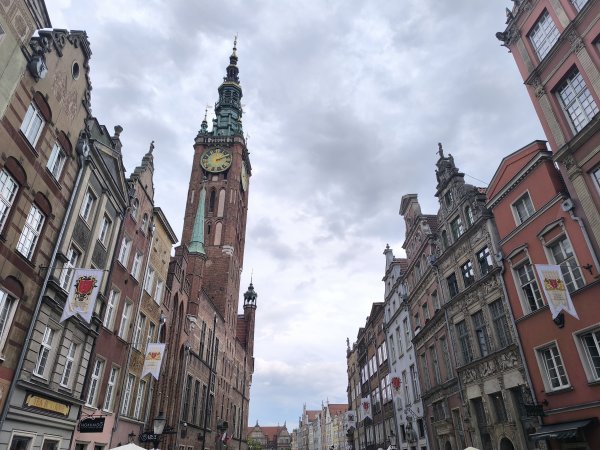
It is time to take another gate from river Motława which is called Brama Zielona (Green Gate) and leads to the main square (Rynek).
The concept of Rynek in Gdańsk is very different from the one of other Polish cities in spite of the similarities, because after seeing the tall and colorful townhouses, the square is getting narrower and eventually turns into a long street which is thus called Długa (literally ‘Long Street’) or Długi Targ (‘Long Market’). As far as I noticed, locals do not even use the phrase rynek in the case of Gdańsk.
Of course, the square is always full of life, particularly for its greatest sights: the Ratusz (Town Hall), the Fountain of Neptune and its wonderful figurines and the Artus Court. If you remember the story of the tragic clockmaker, an alternative story says that it was not the astronomical clock, but the clock of Ratusz that he installed and he was pushed down from the top of the Town Hall.
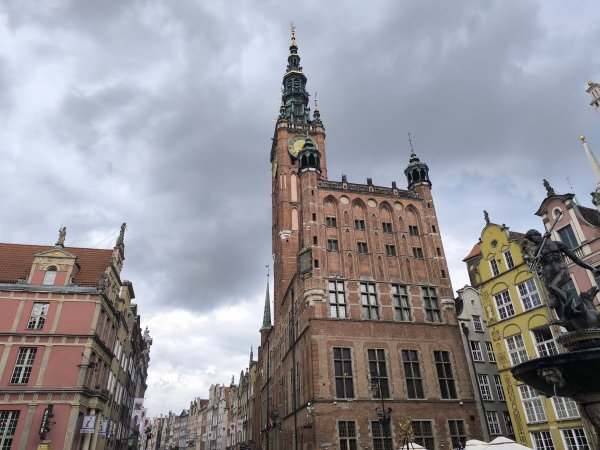
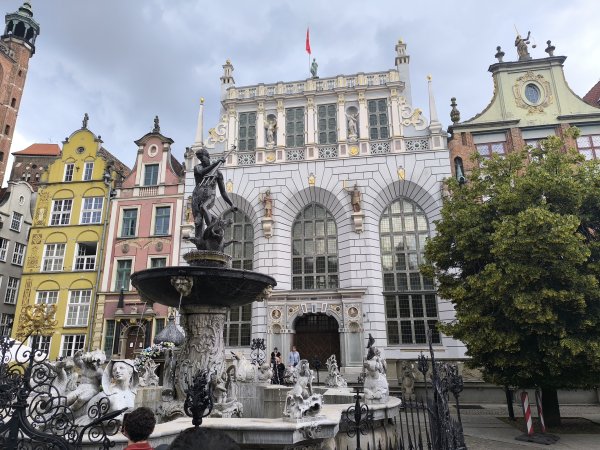
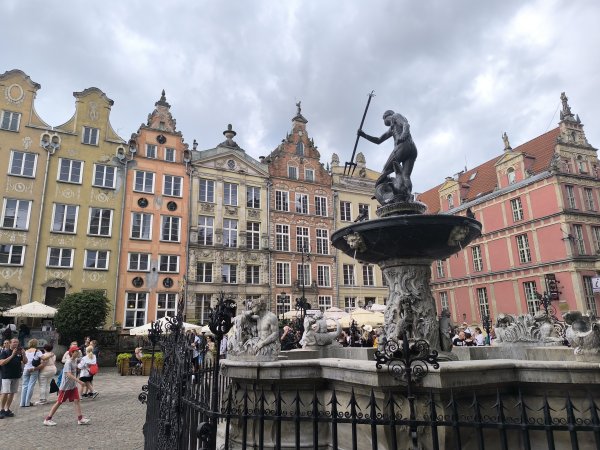
However, there are also legends related to Artus Court: the most famous among them is the ‘Tooth of the Devil’ hanging on a chain on the facade of the beautiful and elegant building.
Being honest, I had been there at least three times during my stay looking for the tooth and could not find it, while later, after my trip it took me only a couple of seconds to find it out that it was hanging on a chain on the right side from the door for the whole time! It is even visible on my photos, I just could not see it with my eyes…
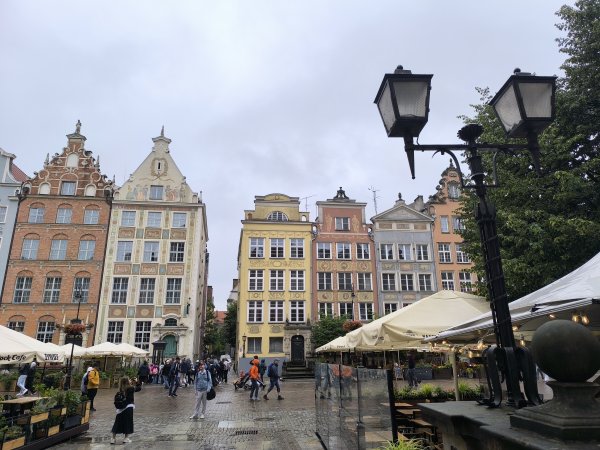
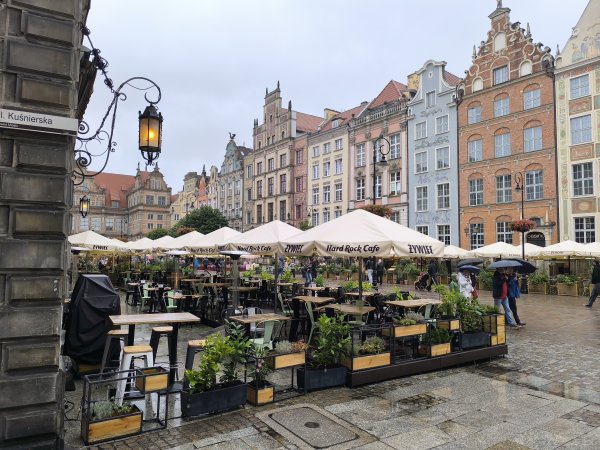
Anyway, the story goes like this that the Devil once wanted to participate in one of the famous balls organized at the Artus Court, but the people discovered his identity, got mad, beat him up and kicked him out so he lost a tooth in this quarrel.
The other story says a rich girl and a poor boy fell in love and they went to the ball together, but the Devil seduced the girl with his tricks. She was captured and kept in a cave, but the boy, first turned into a raven then back to human, saved his love by making the Devil fall asleep and he took one of his teeth as a memory.
We are leaving the old legends and the city centre, but not the city. The next article will take you to the outskirts of Gdańsk and give you a short overview of the modern history of the area.
Do not miss the chance to find out more about it!


